Motorola announced the E5 Plus alongside its latest E5 and G6 lineup of smartphones back in April as part of a global launch in Brazil. While the Lenovo-owned company gears up for the launch of its Moto One Power and Moto Z3 flagships for next month, Motorola has announced the Moto E5 Plus as the third entrant in this year’s budget E series.
The E5 Plus from Motorola comes as the latest entry-level competitor for under Rs 12,000 with the latest Android interface, massive battery and a sleekish design. Keeping that price point in mind, the Moto device goes head to head with Xiaomi’s successful Redmi Note 5 and Realme 1 from Oppo which has recently gained traction in the Indian budget smartphone market. But does the Moto E5 Plus have all it takes to beat both its competitors? Let’s find out.
Build & Design:
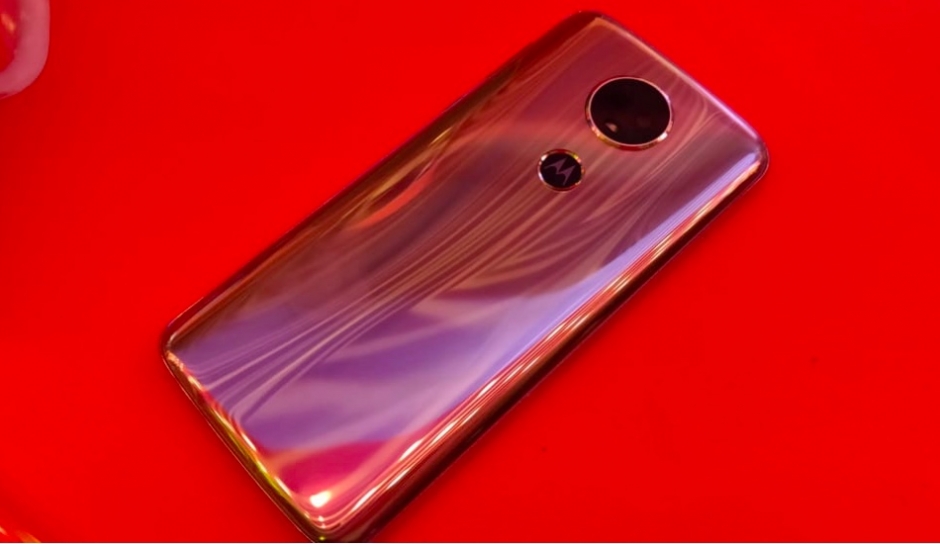
Motorola has brought out the Moto E5 and E5 Plus as part of a solution to the long-running debate of Glass vs Matt back panels on smartphones and the E5 Plus kind of settles the dispute for some time. The device in its Black and Gold variant comes with a visual appeal that’s justified by a shiny and glossy exterior of the back panel which is actually made of plastic. The highly reflective rear panel catches light in a dozen different ways and has a shimmering effect every time you project a new light source on the device. While the Gold coloured version renders this effect quite well, the black variant will make sure the fingerprint smudges aren’t as visible as they should be.
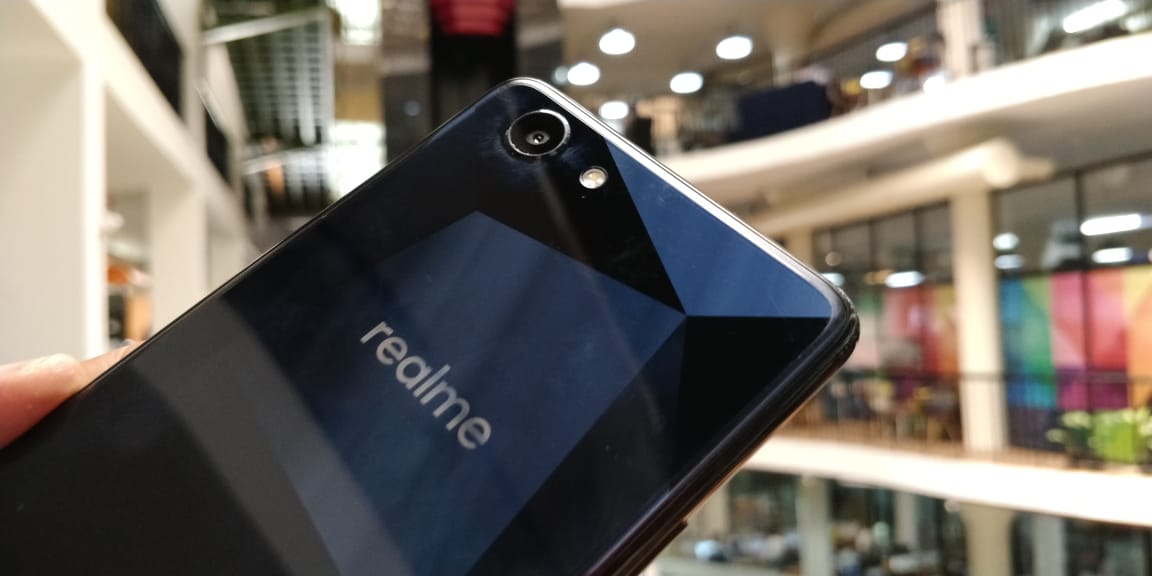
Upon first glance, the Oppo Realme gives its users a bold unique look with a fibreglass body at the back that has Diamond-ish finish reminding us of the old Nokia Prism. The all-black design with various shades of grey on the back panel and curved edges make the Realme 1 quite sweet to look at and hold it as well. Though the glass-clad panel at the back could welcome dust and fingerprints on the device, that doesn’t stop the Oppo device from being the eye-candy it is.
The Redmi Note 5 for all its goodness offers a standard below par unibody design which isn’t great to look at. When not buying the black variant, the device’s thin bezels look much more visible in addition to the slightly thin black bezel on the inside of the glass panel. But having said all that, the design is not particularly out of touch either as Xiaomi has provided with an easy to reach fingerprint scanner and volume rockers on the sides. However, there’s a camera bump at the back, which will leave the camera glass exposed to scratches, not to forget the awkward inclination at which the phone will rest when placed on a flat surface.
Winner: Moto E5 Plus
Display:
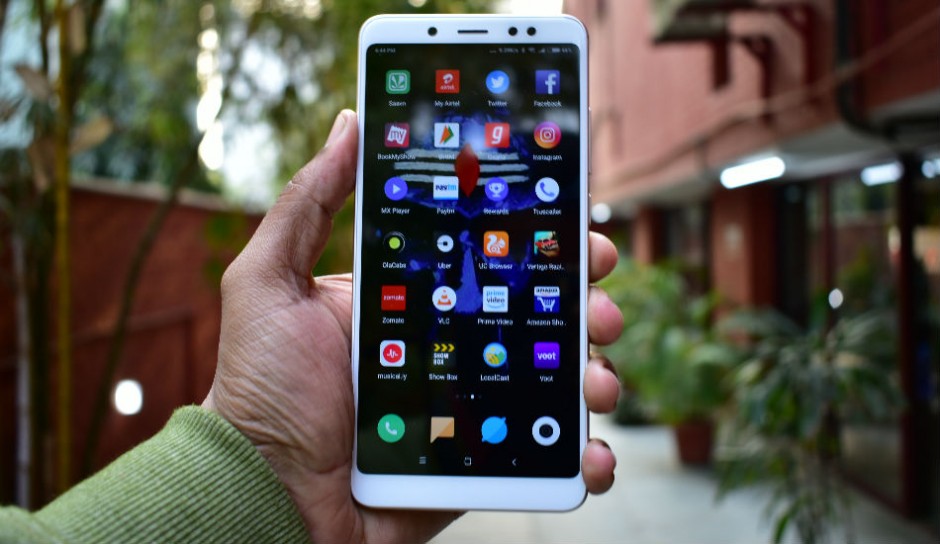
While the Xiaomi device doesn’t provide with the best of designs, its display gives its users an immersive experience. The 5.99-inch FHD+ offers an 18:9 aspect ratio, a colour contrast ratio of 1500:1 and a brightness that goes up to 450 nits. This means, not only does it offer an elongated and high-density 403 ppi display, the blacks on the screen are equally sharp and is bright enough to be used outdoors as well. The ultra-thin bezels on the edges also save space for an all-display front that scores a screen-to-body ratio of 77.4 percent.
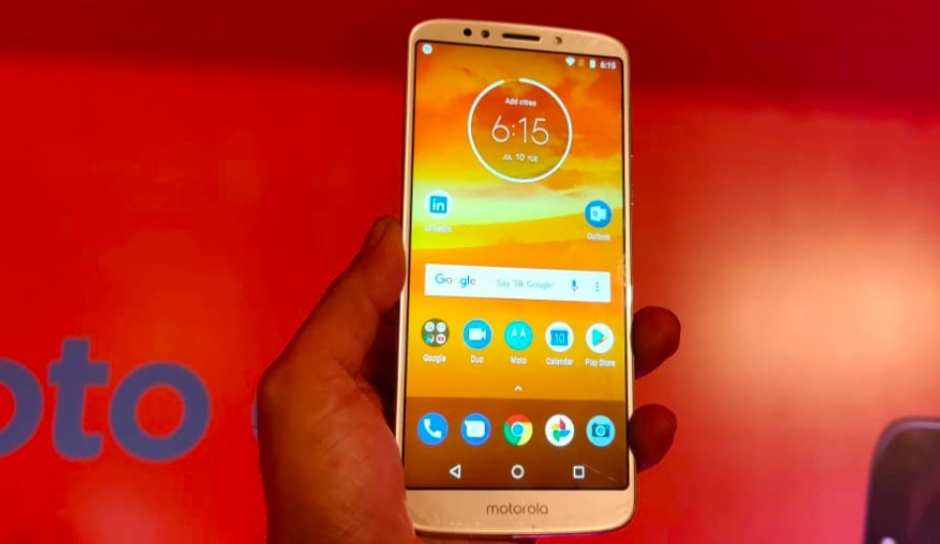
The E5 Plus from Motorola comes with a large 6-inch HD+ IPS LCD display but don’t expect any densely decorated screen as the resolution has been reduced to 720 x 1440 pixels with a Pixel density of 270 ppi. However, the pixels don’t show up in normal lighting conditions and colour contrast is well matched as well on the elongated 18:9 display. There are significant bezels, thus amounting to a screen-body-ratio of 76.7 percent on the Moto E5 Plus.
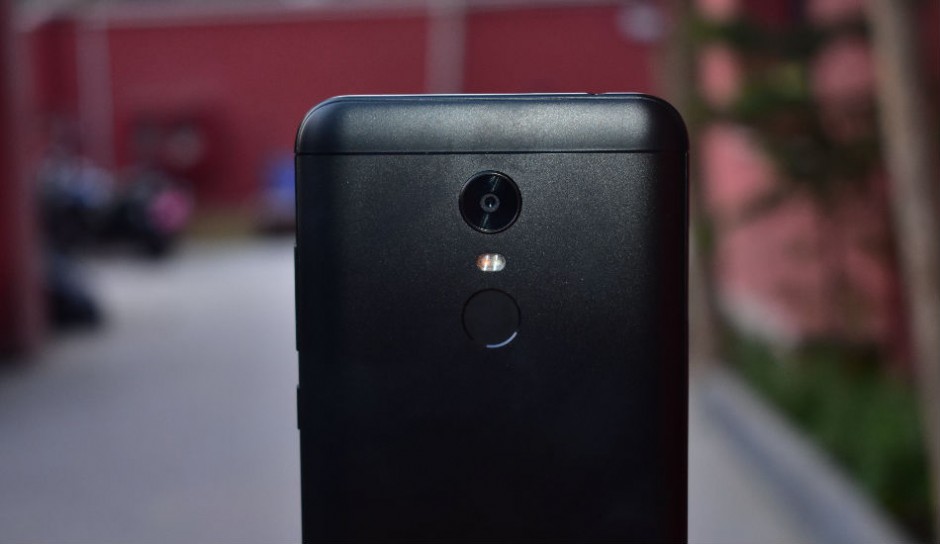
Oppo’s Realme 1 provides a similarly sized 6-inch FHD+ screen with a resolution of 2160 x 1080 pixels and 402 ppi pixel density. The phone comes with even thinner bezels than the Note 5 Pro resulting in a screen-to-body ratio of 78.9 percent, which looks pleasant to the eye but only when used inside a room.
Winner: Realme 1
Hardware:
Performance is where the Oppo Realme 1 impresses the most and you’d be surprised how well it fares alongside its Xiaomi counterpart. The Realme 1 is powered by an octa-core MediaTek Helio P60 Processor with 6GB of RAM and 128GB of internal storage and can run all of your daily tasks swiftly, not only on paper. This is due to the fact that the Helio P60 lines up decently when listed against Snapdragon’s 600-series chipsets. Not just daily usage, playing graphics intensive games like PUBG also kept the device running smoothly with no lags or heating whatsoever. The massive 128GB storage means you’ve got enough internal space to store all your photos and movies for entertainment on the go. The only hardware feature it lacks could be the fingerprint scanner but Oppo’s Realme 1 offers one of the fastest Face Unlock authentication the price range which means you’re not quite at loss.
The Redmi Note 5 in question is the 4GB RAM variant which is powered by Qualcomm’s latest Snapdragon 625 SoC coupled with an Adreno 506 graphics unit. Though the 4GB variant handles day-to-day tasks well, it’ll surely not match up to the smoothness that 6GB RAM Oppo provides. Further adding to Xiaomi’s problems is the lower 64GB of onboard storage.
While upping its game in design and display, the Moto E5 Plus fails to impress in the performance department as it still is powered by the year-old Snapdragon 425 Chipset with up to 3GB RAM and 32GB of internal storage. While the device runs day to day tasks quite well and snappy on most occasions, the internal mapping doesn’t offer any hopes of graphics intensive gaming. The E5 Plus, however, has a fingerprint scanner, earning enough points on the basis of biometrics.
Winner: Oppo Realme 1
Camera:
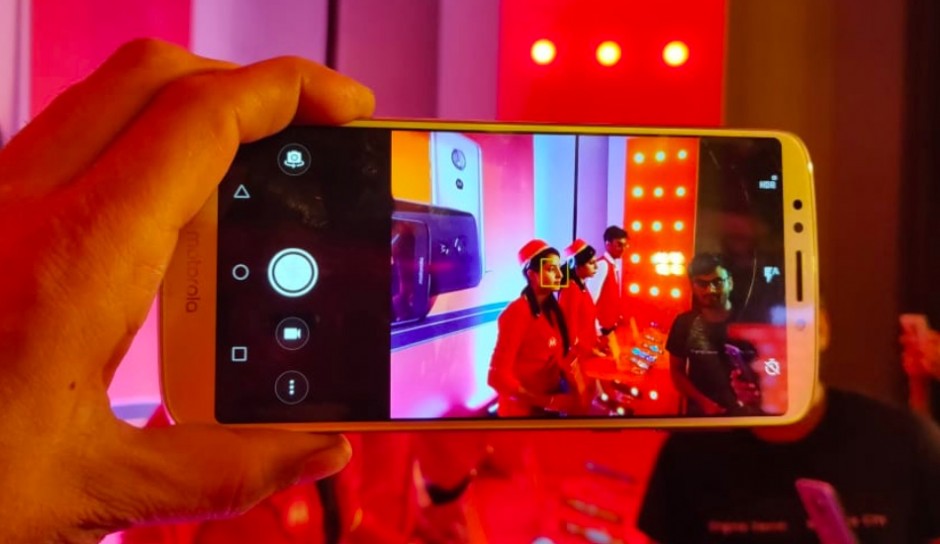
The rear 12 MP camera at the back of the Moto E5 Plus comes with a pixel size of 1.25µm and f/2.0 Aperture meaning the images on the main camera is a passable affair. while the back of the device might fool you into believing that there are two Sensors for primary imaging, the truth is that the secondary hole features the Laser Autofocus. The E5 Plus lacks the smart landmark recognition and depth editing features that are part of Moto’s more popular G-series smartphone which isn’t surprising considering it’s a cheaper device.
With so much to praise about the Realme 1, it’s the camera that doesn’t perform up to the mark. The 13-megapixel rear camera is okay at best as most of the pictures clicked appear to be washed out with no level of detail. Though colour saturation can be improved with the help of a Super Vivid mode, low light pictures are pretty noisy. However, the front-facing 8MP sensor on the front does some justice to the device as it clicks decent portraits with the right depth of field.
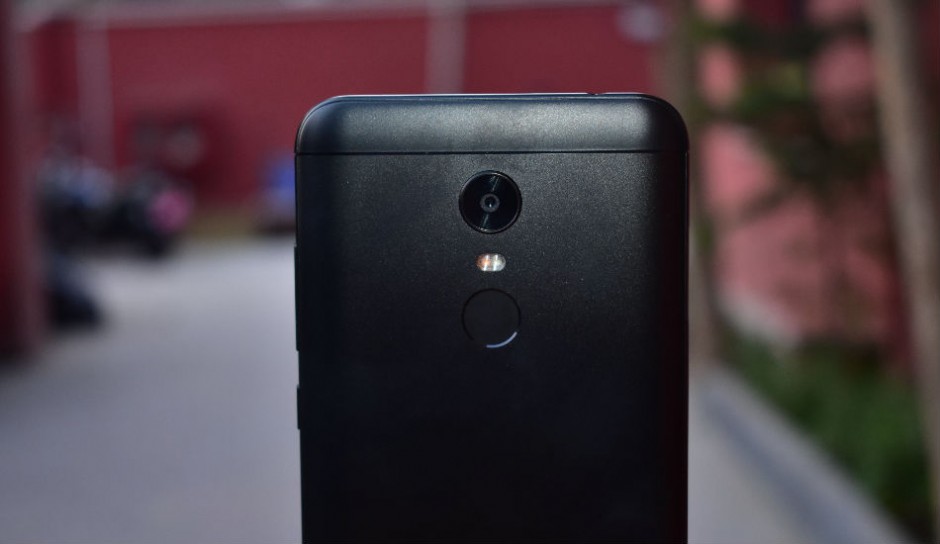
The camera on the Redmi Note 5 is a 12MP sensor with 26mm f/2.2 lens and 1.25µm size pixels. Phase-detection autofocus, and a dual-tone flash complete the camera specs. Images clicked on the device appear to be sharp and detailed,though a little more contrast and correct colour saturation would have made the Note 5 a lot more usable. Low-light photography spoke a different story than what has been seen on the Note 5 Pro, as pictures turned out to be soft and full of noise.
Winner: Oppo Realme 1
Software:
Xiaomi released the Note 5 with Android 7.1.2 Nougat and MIUI 9 running on top but the company is currently testing the Android Oreo update. Google’s latest OS on the Note 5 will be accompanied by MIUI 10 which is the latest firmware iteration under Xiaomi. Though the MIUI interface looks a lot lighter than usual, it’s not wholly bloat-free and still comes with a heavily customised interface which will need users to go through a steep learning curve.
On its release, the Realme 1 came with the latest Android 8.1 Oreo out of the box but Oppo did manage to cram in its own ColorOS 5.0 which is heavy on background usage with tons of bloatware added onto the screen. The interface still needs some getting used to as apps are placed randomly on the home screen instead of alphabetical order. However, the Realme 1 is expected to handle the land smoothly considering it runs on 6GB of RAM.
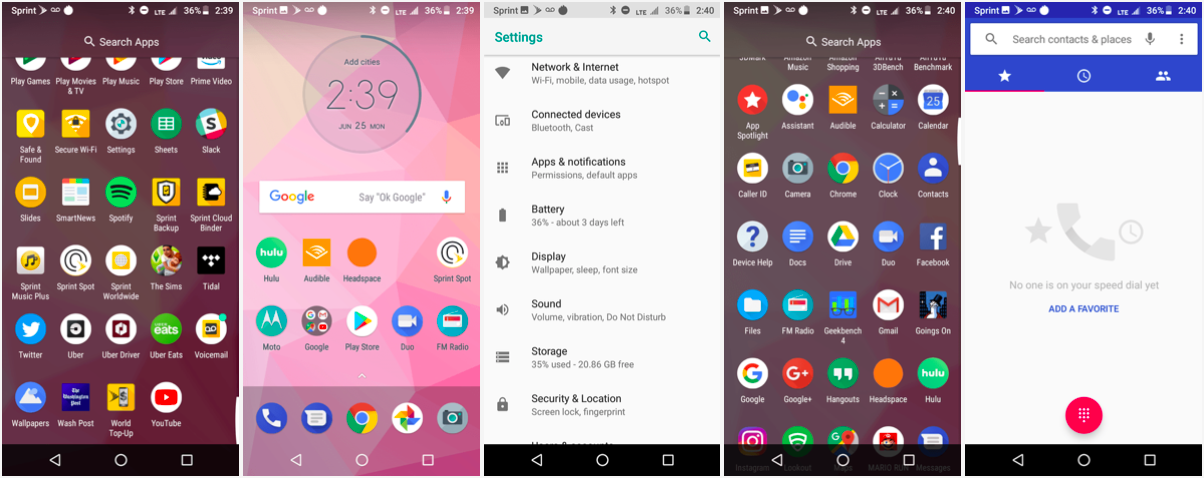
As from what you’d expect from a Motorola device, it isn’t surprising to see the Moto E5 Plus boasting of the latest Android OS out of the box. As stock as it seems to be, the Moto handset will be home to some bloatware if not at the same level as its competitors. However, users will be able to uninstall these pre-installed apps and the interface is pretty much neat and will be snappy for the most part of the day.
Winner: Moto E5 Plus
Battery:
Although the Oppo Realme 1 comes with a rather standard 3,410mAh battery, with normal use, the phone lasted more than one day which is quite impressive. What’s interesting is that even when the phone was tested with heavy usage like playing games, making calls and browsing the internet, it still made it through the end of the day, owing to impressive software optimisation and the MediaTek chipset.
Up until now, it was the Redmi Note 5 lineup which offered a plus point for users who were in dire need of a larger battery to survive the long haul of a working day. The 4,000mAh battery in the Note 5 lasts up to one and half days on a single charge cycle. The only letdown in this department is the lack of Fast charging on the phone which is growingly demanded even in budget level smartphones.
The highlight reel of the Moto E5 Plus is it enormous 5,000mAh battery which Motorola claims will last at least 36 hours on regular use. You can thus expect to go a whole day without charging and still ending up with over 60 percent of the battery left to be used. Motorola has also equipped the E5 Plus with a 15W TurboPower charger that will be able to fuel up your device to six hours of use in under 15 minutes.
Winner: Moto E5 Plus
Verdict:
The Moto E5 Plus is an attractive budget smartphone that offers a solid performance, a massive 2-3 day battery with Turbocharging support, decent imaging capabilities and near-to-stock Android that is easier to use right out of the box. It will certainly work as a daily driver as long as streaming music, checking emails, a few texts and watching YouTube is what you’d normally do on a smartphone.
With constant competition from other OEMs, Xiaomi doesn’t quite provide what you might want on a budget smartphone. The device runs on a two-year-old Snapdragon 625 chipset which isn’t as power efficient as the SND 636. However, it packs in a beautiful display and large battery that earns enough credits, if you wouldn’t mind settling for a below-par looking handset with large bezels on the top and bottom.
For everything concerning the performance of a smartphone, the Realme 1 from Oppois the best choice among the three if you don’t mind the lack of a fingerprint scanner. However, Oppo’s face unlock feature works like a charm if you feel like you’re missing out on a proper authentication technique. The device is super snappy and will be the cheapest available handset for gaming purposes.
Considering all of that, it all comes down to perpectives and what a user really wants from their daily driver. While for some, looks may play a big hand, some would rather want a device that performs up to the brim. For some, the middle-ground between these two options also provides choices if you’re willing to compromise on moderately rated features.


